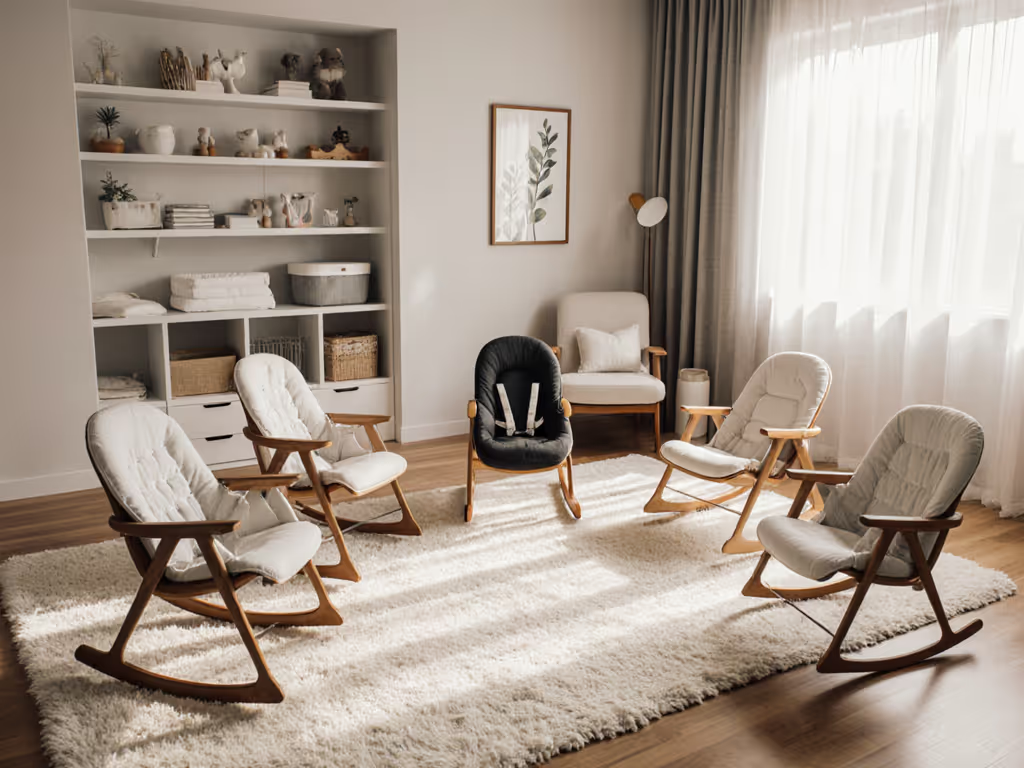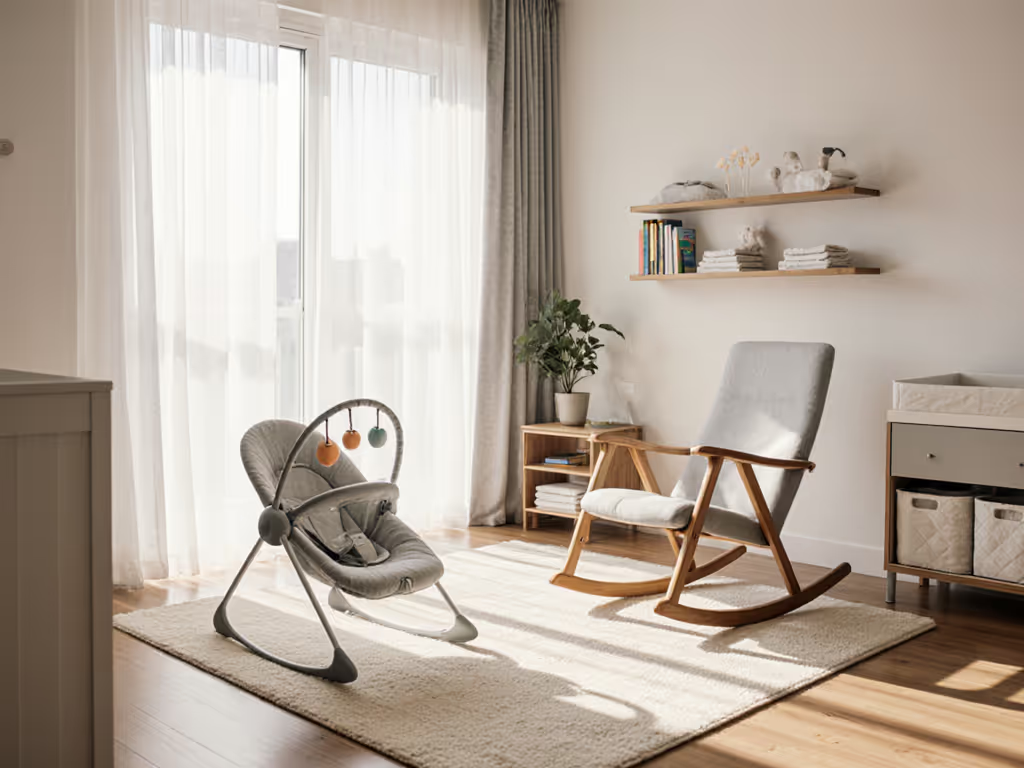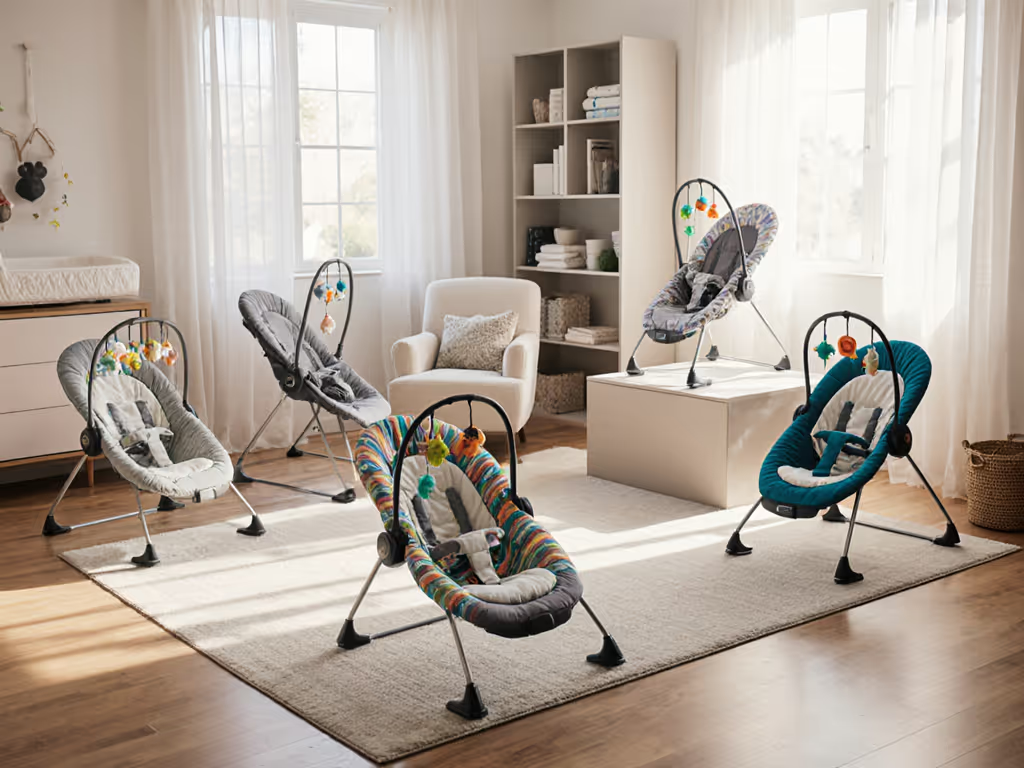
Infant Bouncer Frame Explained: Function, Types, Safety
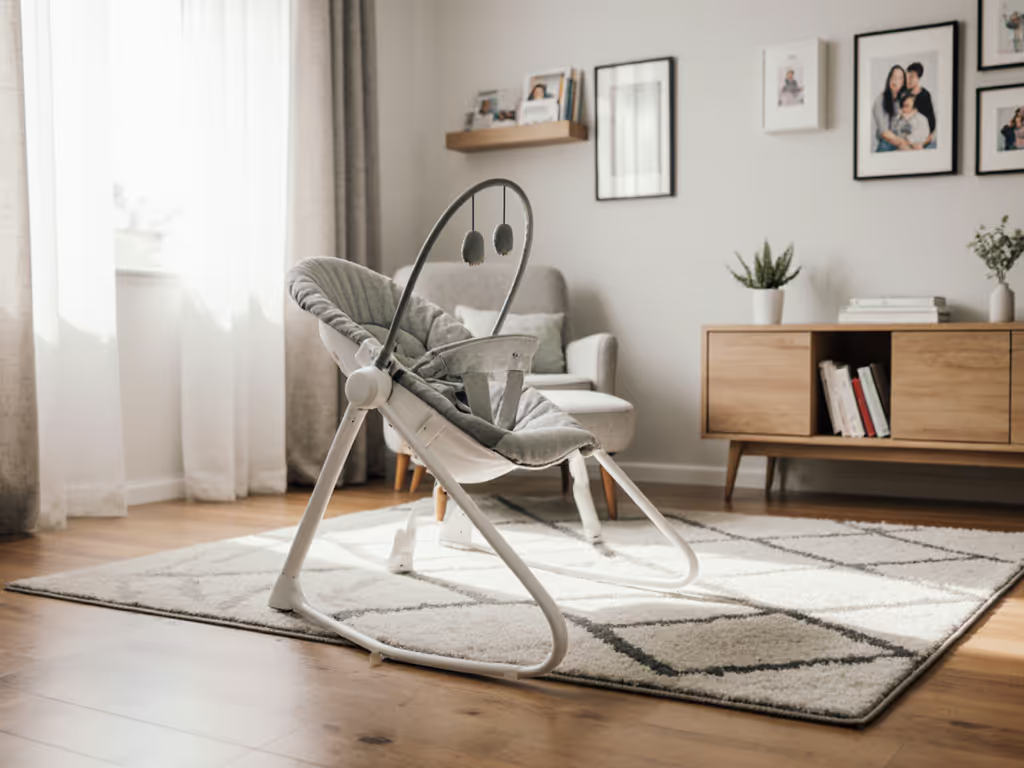
Did you know that over 70 percent of new parents use an infant bouncer frame within their baby’s first six months? Choosing the right place for your baby to rest and play is about more than just comfort. The right frame can support your child’s development, keep them safe, and provide moments of calm for busy caregivers. Understanding how these seats work and what makes each type unique can help your family feel confident from day one.
Key Takeaways
| Point | Details |
|---|---|
| Infant Bouncer Purpose | Designed to provide a safe and supportive space for infants who cannot sit independently, facilitating relaxation and exploration. |
| Types of Bouncer Frames | Available in various designs, each with distinct features such as stationary, wire frame, and mechanical options to suit different needs. |
| Safety Considerations | Always follow manufacturer guidelines, use safety harness systems, and supervise infants to prevent accidents. |
| Materials and Features | Prioritize high-quality materials, adjustable settings, and multifunctional features to ensure infant comfort and safety. |
What Is an Infant Bouncer Frame?
An infant bouncer frame is a specialized seating apparatus designed to provide safe, supportive rest for babies who cannot yet sit independently. These compact, lightweight structures offer a secure place for infants to relax, play, and explore their surroundings during those critical early developmental months. Unlike traditional cribs or playpens, bouncer frames create a unique environment that can gently soothe and entertain your little one.
Typically constructed with a sturdy base and flexible seat, these frames come in multiple configurations to accommodate different infant needs. Some models feature stationary designs, while others incorporate dynamic movement mechanisms that allow gentle rocking or bouncing. The primary goal is to create a comfortable, safe space where babies can experience sensory stimulation without direct caregiver intervention. Most bouncer frames are engineered for infants from birth to approximately six months old, corresponding with the period when babies have limited mobility but increasing curiosity about their environment.
Key characteristics of infant bouncer frames often include:
- Lightweight, portable construction
- Adjustable recline positions
- Soft, washable fabric surfaces
- Safety harness systems
- Optional vibration or music features
- Compact design for small living spaces
While these frames provide wonderful support for infant development, parents should always follow manufacturer guidelines and never leave a child unattended. Proper positioning, weight limits, and age appropriateness are critical factors in ensuring your baby's safety and comfort during bouncer frame usage.
Types of Infant Bouncer Frames Explained
Infant bouncer frames come in several distinctive design categories, each offering unique features to support and entertain your baby. The primary types range from basic stationary models to more advanced dynamic frames that incorporate movement and sensory stimulation. Understanding these variations can help parents select the most appropriate bouncer for their infant's developmental stage and home environment.
The first major category is stationary frames, which provide a stable, fixed seating position for younger infants. These bouncers typically feature a solid base with minimal movement, focusing on providing a secure resting space. Wire frame bouncers represent another subcategory, utilizing individual wire legs or forward and rear bend designs to create lightweight, flexible structures. Some models incorporate spring mechanisms that allow gentle bouncing through subtle infant movements or caregiver interaction.
Here's a comparison of the main types of infant bouncer frames:
| Type of Bouncer Frame | Movement Style | Typical Features | Safety Considerations |
|---|---|---|---|
| Stationary Frame | No movement | Stable base<br>Simple design | Best for youngest infants |
| Wire Frame | Light bounce from movement | Flexible wire legs<br>Lightweight | Monitor frame strength |
| Sling Seat Bouncer | Rocking from infant's motion | Fabric sling seat<br>Leg-powered movement | Watch for leg entrapment |
| Mechanical Bouncer | Electronic vibration/rocking | Music<br>Automated rocking<br>Vibration | Ensure battery safety |
| Convertible Bouncer | Adjustable<br>Multi-use | Grows with baby<br>Modular parts | Check proper adjustment |
| Door Frame Bouncer | Bounces by hanging in doorway | Hangs from door<br>Space-saving | Higher safety risk<br>Supervise closely |
Additional bouncer frame types include:
- Sling Seat Bouncers: Fabric-based designs that allow babies to rock or bounce by pushing with their legs
- Mechanical Bouncers: Electronic models with built-in vibration, music, or automated rocking features
- Convertible Bouncers: Frames that can transform or adjust as the baby grows
- Portable Door Frame Bouncers: Designs that attach to doorways (though these carry significant safety risks)
Safety Warning: Always follow manufacturer guidelines and never leave infants unattended in any bouncer, regardless of type or design.
When selecting a bouncer frame, parents should consider factors like the infant's age, mobility level, available home space, and specific developmental needs. Each bouncer type offers distinct advantages, but the fundamental goal remains consistent: providing a safe, comfortable space that supports infant development and gives caregivers a momentary hands-free option.
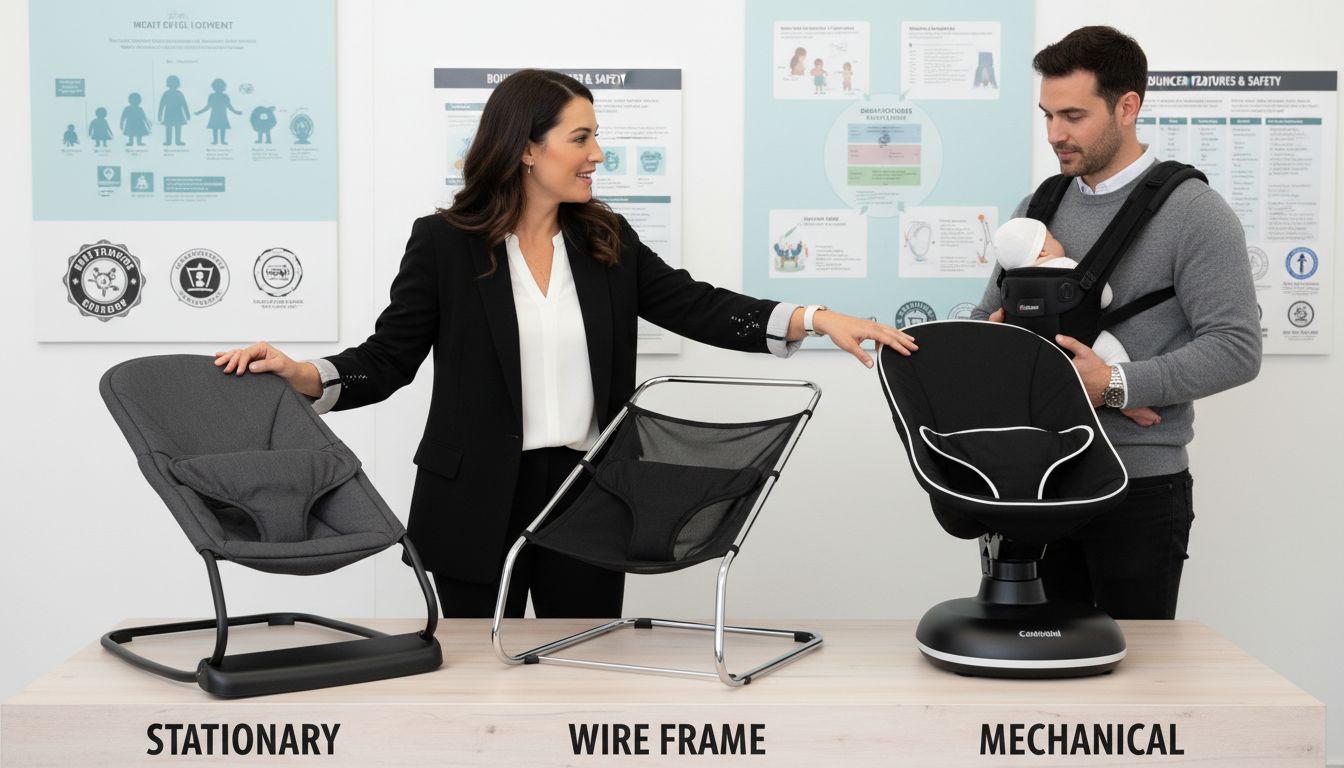
How Infant Bouncer Frames Work Safely
Safety engineering is the cornerstone of infant bouncer frame design, with multiple integrated mechanisms working together to protect vulnerable babies during their most delicate developmental stages. Modern bouncer frames incorporate advanced safety features that go beyond simple physical support, creating a secure environment that minimizes potential risks while providing comfort and sensory stimulation for infants.
The primary safety mechanisms in bouncer frames include structural stability and restraint systems. Manufacturers design these frames with low center of gravity bases that prevent tipping, using wide, weighted foundations that resist accidental displacement. Multi-point harness systems typically include padded straps that secure the infant at multiple contact points - usually across the shoulders, waist, and between the legs. These restraints prevent babies from sliding, rolling, or potentially falling out of the bouncer, especially during unexpected movements or when the frame is slightly tilted.
Key safety considerations for infant bouncer frames involve:
- Placing the bouncer on flat, stable ground surfaces
- Using full safety harness systems at all times
- Avoiding elevated surfaces like tables or countertops
- Monitoring weight limits and age recommendations
- Checking structural integrity before each use
- Keeping the bouncer away from potential hazards
Critical Warning: Never leave an infant unattended in a bouncer, even for brief moments. Constant supervision is essential for preventing potential accidents.
Beyond physical design, modern bouncer frames incorporate additional protective elements like non-slip base materials, breathable fabrics that reduce overheating risks, and clear warning labels highlighting proper usage guidelines. Rigorous safety testing ensures these frames meet or exceed federal safety standards, giving parents peace of mind while providing a safe, comfortable space for their little ones to rest and explore.
Essential Features and Materials to Consider
Selecting the right infant bouncer frame involves carefully evaluating multiple design elements that contribute to both functionality and safety. The materials and features you choose can significantly impact your baby's comfort, support, and overall experience during those critical early developmental months. Parents should approach this selection process as an investment in their child's well-being and daily comfort.
The structural foundation of an infant bouncer frame begins with high-quality materials that balance durability, lightweight design, and infant safety. Frames typically utilize aluminum or reinforced plastic bases for stability, while seat surfaces incorporate breathable, hypoallergenic fabrics like cotton blends or mesh materials. These fabric choices are crucial for temperature regulation and preventing skin irritation. Padding thickness, fabric elasticity, and overall frame flexibility play essential roles in creating a supportive yet comfortable environment that adapts to your infant's natural movements.
Critical features to evaluate when selecting an infant bouncer frame include:
- Multi-point safety harness systems
- Non-slip base materials
- Adjustable recline positions
- Washable fabric covers
- Compact, portable design
- Weight and age limit specifications
- Ergonomic frame contours
- Easy-to-clean surfaces
Important Consideration: Always prioritize safety certifications and manufacturer testing standards over aesthetic preferences.
Beyond physical characteristics, modern infant bouncer frames increasingly incorporate additional sensory features like gentle vibration modes, music playback, or hanging toy attachments. These elements can provide subtle stimulation and entertainment, helping to soothe and engage your baby during short periods of independent play. However, parents should remember that these are supplementary features and should never replace direct caregiver interaction and supervision.
Safety Standards and Space-Saving Benefits
The intersection of safety standards and innovative design has transformed infant bouncer frames into critical tools for modern parenting. Regulatory bodies like the U.S. Consumer Product Safety Commission have established rigorous guidelines that mandate specific safety features, ensuring these compact seating solutions protect the most vulnerable users. These comprehensive standards address everything from structural integrity to warning label placement, creating a robust framework that prioritizes infant protection.
Mandatory safety requirements now include highly visible fall hazard warnings, precise instructions for restraint usage, and strict manufacturing specifications. Manufacturers must incorporate multi-point harness systems, use materials that meet flame-retardant and toxicity standards, and conduct extensive testing to simulate real-world usage scenarios. These regulations have significantly reduced infant injury risks, transforming bouncer frames from simple seating accessories into carefully engineered protective environments.
Key space-saving and safety benefits include:
- Compact folding mechanisms
- Lightweight design for easy transportation
- Minimal floor space occupation
- Ability to store in small apartments or tight living spaces
- Quick setup and breakdown features
- Versatile positioning options
- Ergonomic designs that support infant development
- Compliance with federal safety regulations
Critical Safety Note: Always register your product with the manufacturer to receive important safety updates and recall notifications.
Beyond physical safety, modern infant bouncer frames represent a strategic solution for parents navigating limited living spaces. Their ingenious design allows caregivers to create a secure infant zone without sacrificing valuable home real estate, proving that safety and space efficiency can coexist harmoniously in contemporary parenting solutions.
Comparing Bouncer Frames to Swings and Rockers
Parents navigating the world of infant seating solutions quickly discover that bouncer frames, swings, and rockers each offer unique advantages in supporting infant development and caregiver convenience. While these devices might seem similar at first glance, they differ significantly in design, motion mechanics, and intended developmental purposes, making each tool valuable in specific scenarios.
The primary distinction lies in their movement mechanisms. Bouncer frames are typically passive devices that respond to the infant's own movements, allowing babies to generate gentle bouncing through leg pushes and body shifts. Swings, in contrast, provide mechanical, programmed motion - often with battery-powered or electric mechanisms that create consistent back-and-forth or side-to-side movements. Rockers represent a middle ground, offering manual or semi-automatic rocking motions that can be initiated by caregiver interaction or slight infant movement.
Key comparative features include:
-
Bouncer Frames:
- Lightweight and portable
- Infant-initiated movement
- Minimal mechanical components
- Best for active, alert babies
-
Swings:
- Consistent mechanical motion
- Multiple speed settings
- Often include music and vibration
- Ideal for soothing fussy infants
-
Rockers:
- More manual interaction
- Gentler movement
- Often more compact
- Suitable for calmer environments
Safety Reminder: Always follow manufacturer guidelines and never leave infants unattended in any seating device.
Ultimately, the choice between bouncer frames, swings, and rockers depends on your specific living environment, infant's temperament, and individual developmental needs. Many parents find that a combination of these tools provides the most comprehensive support during those critical early months of infant care.
![]()
Find the Perfect Infant Bouncer Frame for Your Baby’s Safety and Comfort
Choosing the right infant bouncer frame can feel overwhelming, especially when you want to ensure your little one’s safety while managing limited space at home. This article highlights essential concerns like secure harness systems, suitable materials, and the best movement styles to support early development. If you are looking to balance safety, ease of use, and space-saving convenience, understanding the different types of bouncers and their safety features is the first step.
At Bouncer Lab, we specialize in guiding parents through these exact challenges. Our detailed reviews and simple comparison guides help you find models that offer sturdy construction, compact design, and trusted safety certifications. Ready to give your baby a comfortable and secure space to grow while freeing up your living area? Explore our expert insights and find the best infant bouncer frame tailored for your home and routine. Visit Bouncer Lab now and take advantage of our comprehensive resources designed to make your decision easier and safer.
Frequently Asked Questions
What is an infant bouncer frame?
An infant bouncer frame is a specialized, lightweight seating apparatus designed to provide a safe and supportive resting space for babies who cannot sit independently. It allows infants to relax, play, and experience sensory stimulation while promoting development during their early months.
What types of infant bouncer frames are available?
There are several types of infant bouncer frames, including stationary frames, wire frames, sling seat bouncers, mechanical bouncers, convertible bouncers, and door frame bouncers. Each type offers unique features and movement styles to cater to different infant needs and preferences.
What safety features should I look for in an infant bouncer frame?
Key safety features to consider include a multi-point safety harness, stability mechanisms to prevent tipping, non-slip base materials, and materials that comply with safety standards. Always ensure that the bouncer is placed on flat surfaces and is suitable for your infant's age and weight.
How do infant bouncer frames differ from swings and rockers?
Bouncer frames are typically passive devices that respond to an infant's own movements, while swings provide consistent mechanical motion often with multiple speed settings. Rockers offer gentle movement that can be initiated manually. Each serves a different purpose depending on the infant's needs and preferences.


